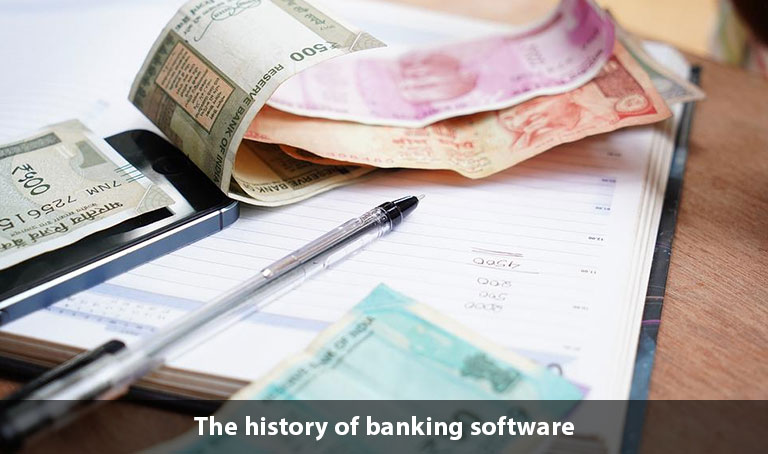The history of banking software
Updated On : Dec 2022
Financial Institutions today are seeking different ways to meet customer expectations and are changing the way conventional banks operate. With competition in the banking industry increasing, banking software is increasingly being used to manage and provide financial services and products. A lot of core banking software is helping banks to modernize quickly and efficiently.
What is Core banking?
According to Gartner, a core banking system is a back-end software that processes daily banking transactions and posts updates to accounts and other financial records.
Technology has transformed the banking system, with traditional banking methods making way for the latest technological innovations in highly sophisticated systems, and Core Banking has become a significant milestone for the banking industry.
Core (Centralized Online Real-time Exchange) banking software refers to banking software that provides the infrastructure to build, deploy, and administer financial products. Core banking is a centralized system or a group of networked bank branches that allows account holders to access bank accounts and perform basic transactions from any member bank branch.
Core banking software handles the processing and accounting of financial transactions, simplifying the banking procedures and processes for its different applications. Its solutions include deposits, loans, payments, etc., which are made accessible to customers. The core banking system uses information and communication technology to simplify banking procedures and processes for its various applications.
History of banking software
In the 1970s and before, transactions would take at least a day to reflect in the account, with data from servers in each branch sent in a batch to the data centre servers at the end of the day. This led to a need to bring the computers into Indian banks by the early 1980s. Computers were introduced at the branch level, with various national committees formed by the government to facilitate the process. By the late 1980s, Dr. C. Rangrajan, the then deputy governor of the RBI, had introduced the concept of "core banking" in India.
The 1990s saw the transformation of core banking, with private sector banks and foreign banks having access to the Indian banking industry due to globalization and the introduction of TRAI (Telecom Regulatory Authority of India). Core banking became possible with computer and telecom technology, which allowed information sharing between bank branches quickly and efficiently.
Today, with the intense competition in the banking industry, new age banks are using core banking software and grabbing a huge market share by targeting lucrative niches in the value chain. McKinsey research shows over 65% of banks are exploring the potential of next-generation core banking platforms, with 70% of banks actively reviewing their core banking platforms. This is leading more core banking providers to work on their products in order to deliver innovative, personalised solutions.
Features & benefits of Core Banking
The banking industry in India has benefited immensely with the advent of core banking, which offers excellent support in daily business. It minimizes manual tasks, saving time and money; increases the efficiency and productivity of employees; and simplifies the assessment, management, and upgrading of data.
Some basic features are -
Processes and records deposits and withdrawals of money
Calculates loan interest and processes loans
Helps in the opening of new account
Cheque and Payment clearance
Manages customer information
Helps in creating new banking products
Banking analytics
Availability of mobile banking, internet banking, etc.
The need for core banking
The use of information technology has become an important tool for the growth of any industry, and banks can benefit immensely by reducing operation costs, etc. Core banking can cater to the needs and demands of the market and the customers by improving and simplifying the banking process. Core banking can help banking facilities reach the remote and rural areas of this country.
Core banking software vendors offer platforms customized to suit the needs of different banks. They offer design consulting services following the compliance requirements of financial institutions, emphasising flexibility to cater to personalized customer experiences and financial products.
Today, transformation in core banking is taking place faster than ever, as technologies like blockchain, AI, mobility, and big data evolve rapidly, disrupting the ongoing business models of banks. Customers too are pioneering the changes and adopting new technologies that are responsible for new ways of interacting with their banks. Thus, core banking is just the beginning of the Indian banking industry's future of paperless and branchless banking.
Nelito's Core Banking System provides integrated solutions for retail banking, corporate banking as well as has features supporting trade finance & loan management systems. To know more about the solution write us at marketing@nelito.com or visit us here.


Comments :